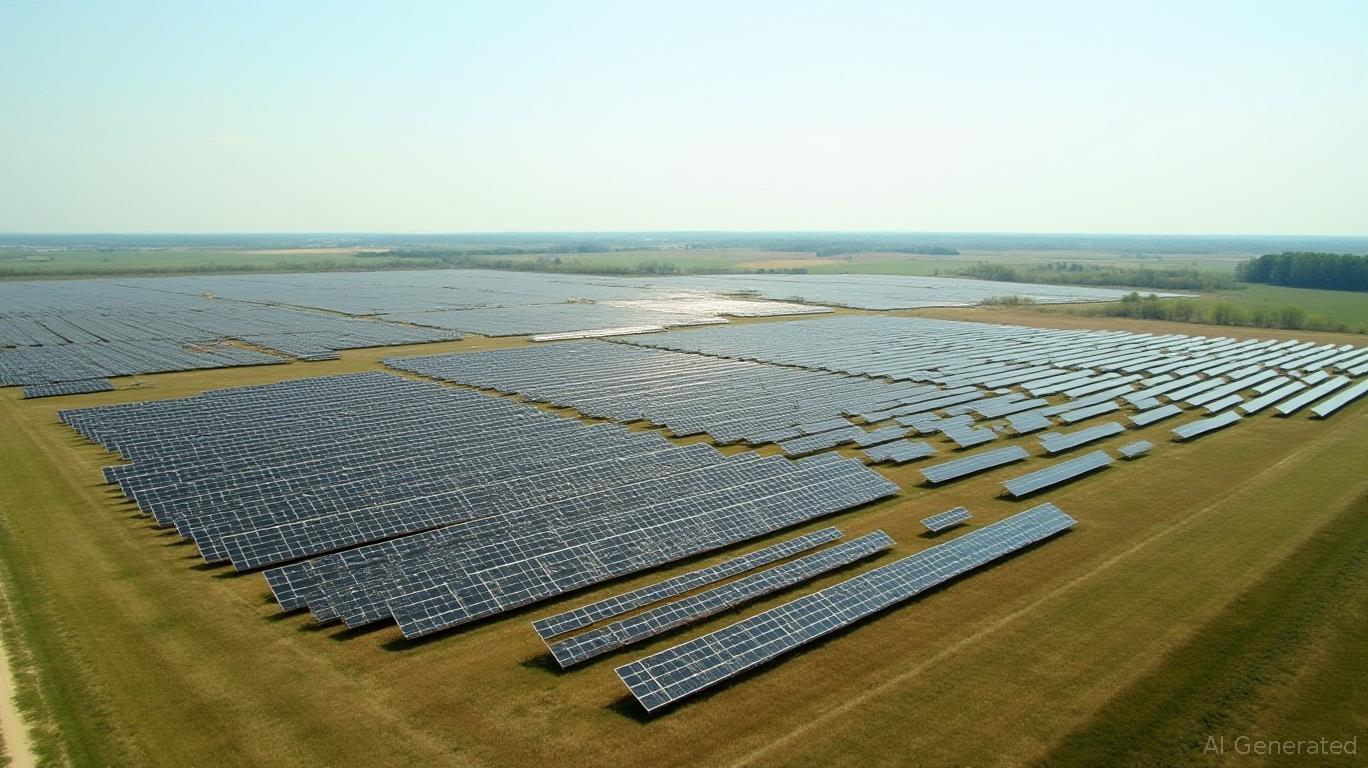DTE Energy: Navigating the Renewable Transition and Grid Resilience in a Shifting Regulatory Landscape
The energy sector is undergoing a seismic shift, driven by global decarbonization goals and evolving regulatory frameworks. For utility companies like
(NYSE: DTE), success hinges on balancing aggressive renewable expansion, grid modernization, and compliance with state mandates—all while navigating the uncertainties of rate approvals and cost management. In Michigan, where serves over 2.2 million electric customers, the company's strategy is both a microcosm of industry trends and a test case for how utilities can thrive in the ESG era.Renewable Expansion: A Bold Bet on Clean Energy
DTE's renewable portfolio is the cornerstone of its ESG strategy. By 2032, the company aims to add 5,400 MW of renewable capacity—primarily solar and wind—alongside 760 MW of energy storage. This includes the recently completed Pine River Solar Park, a 200-MW project that underscores its commitment to scaling utility-scale solar. By 2042, DTE's long-term vision calls for over 18,000 MW of renewables, requiring an average of $5.5 billion in annual renewable investments starting in 2026.

This growth is underpinned by Michigan's aggressive renewable targets: 50% by 2030 and 100% clean energy by 2040. DTE's alignment with these goals positions it to capture state incentives and regulatory favor, but execution is critical. The $30 billion capital plan for 2025–2029 allocates significant resources to renewables and grid upgrades, a scale that demands flawless project management to avoid cost overruns.
Grid Resilience: A Prerequisite for Stability
While renewables drive ESG credibility, grid modernization ensures operational reliability. DTE has invested $5 billion since 2020 to harden infrastructure against extreme weather, deploy smart grid technologies, and reduce outages—a priority in a state prone to ice storms and wind damage. The company aims to cut outage frequency by 30% and duration by 50% by 2029, using real-time data from its Power Reliability Map to track progress.
The integration of energy storage is equally vital. DTE's 14-MW battery storage system, the largest in Michigan, exemplifies how the company is mitigating the intermittency of renewables. However, scaling storage capacity remains a hurdle, requiring sustained investment and technological innovation.
Regulatory Crossroads: Rate Hikes and Political Pushback
DTE's financial health is inextricably tied to Michigan's regulatory environment. In April 2025, the Michigan Public Service Commission (MPSC) approved a $217 million rate increase to fund infrastructure and reliability improvements—a win for DTE. Yet its 2026 rate case, seeking a $574.1 million hike, faces opposition from the state attorney general, highlighting the growing political scrutiny of utility pricing.
The MPSC's performance-based regulation framework adds another layer of complexity. DTE's profitability now depends on meeting reliability targets, with financial incentives for overperformance and penalties for underperformance. This structure incentivizes operational discipline but introduces volatility if metrics slip.
Financial Fortitude Amid Uncertainty
DTE's Q1 2025 results reveal a company executing its strategy. Operating earnings of $2.10 per share exceeded analyst expectations, and a $1.09 dividend maintained its reputation for shareholder stability. With a stock price near $135 (up 7% year-to-date) and a PE ratio of 18.23, the market is pricing in optimism about its clean energy growth. Analysts' average price target of $139.67 suggests confidence in its execution, though risks linger.
Risks on the Horizon
Despite its progress, DTE faces three critical challenges:
1. Regulatory Lag: Delays in rate approvals could strain cash flow as capital expenditures escalate.
2. Renewable Integration Costs: Managing variable energy sources demands ongoing grid upgrades and storage investments.
3. Political Uncertainty: Michigan's evolving energy policies and legal challenges could disrupt funding for DTE's projects.
Investment Thesis: A Long-Term Play with Near-Term Volatility
DTE Energy presents a compelling case for investors willing to embrace the complexities of regulated utilities. Its alignment with Michigan's ESG goals and its track record of executing large-scale projects position it to capitalize on the clean energy transition. However, near-term volatility from regulatory disputes and capital-intensive projects makes it a stock for patient, value-oriented investors.
Recommendation: Buy with a multi-year horizon. DTE's fundamentals—strong earnings, dividend stability, and strategic alignment with state mandates—suggest it can outperform peers over time. However, investors should monitor the 2026 rate case outcome and track its progress on grid reliability metrics. For those prioritizing ESG integration in utilities, DTE remains a top-tier candidate in a sector undergoing transformative change.
In the energy transition, adaptability is key—and DTE's blend of ambition and regulatory savvy may just be the formula to navigate the coming decade.

Comments
No comments yet